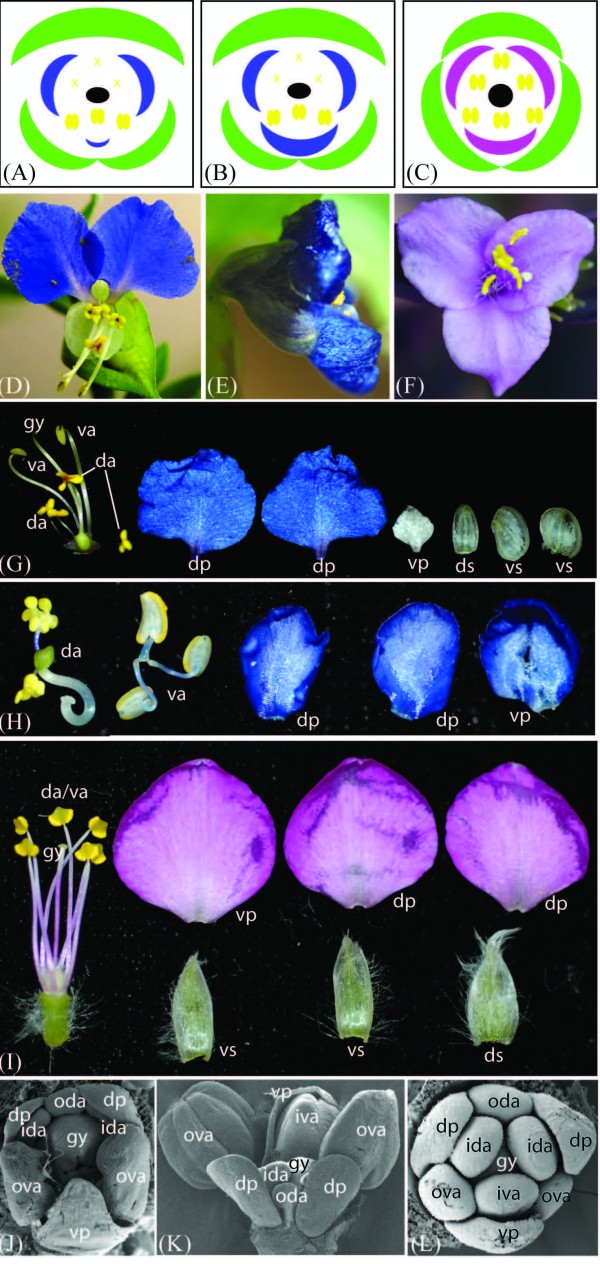Figure 2.
Flower morphological diversity in representative Commelinaceae species. (A-C) Floral diagrams of mature C. communis (A), C. dianthifolia (B) and T. pallida (C) flowers. Stamens (yellow) and gynoecia (black) of both Commelina species and inner tepals (blue or pink) of C. communis are strongly bilaterally symmetrical, outer tepals (green) of both Commelina species and inner tepals of C. dianthifolia are weakly bilaterally symmetry, and all organ whorls of T. pallida are nearly radially symmetry. (D) Front view of a bilaterally symmetrical Commelina communis flower showing the two large dorsal inner tepals (blue), reduced ventral inner tepal, reduced dorsal staminodes (upper yellow organs), and pollen-producing ventral stamens (lower yellow organs). (E) Side view of a C. dianthifolia flower showing the two large dorsal inner tepals (upper blue) and the even larger ventral inner tepal (lower blue). (F) Front view of a radially symmetrical Tradescantia pallida flower showing the three equal pink inner tepals, and six equal stamens. (G) Individual organs of post-anthesis C. communis flowers. (H) Individual organs of post-anthesis C. dianthifolia flowers; outer tepals are not shown. (I) Individual organs of post-anthesis T. pallida flowers. (J) Scanning electron micrograph (SEM) of a mid-stage C. communis flower; the ventral region develops faster than the dorsal region (this stage), and then the ventral inner tepal arrests development (later stage). (K) SEM of a late stage C. dianthifolia flower. The ventral region develops faster than the dorsal region from early to late stages. (L) SEM of an early stage T. pallida flower showing that radial symmetry is established early in development. ds, dorsal outer tepal; ventral outer tepal; dp, dorsal inner tepal; vp, ventral inner tepal; oda, outer dorsal androecium; ida, inner dorsal androecium; iva, inner ventral androecium; ova, outer ventral androecium; da; dorsal androecia; va, ventral androecia; gy, gynoecium.

